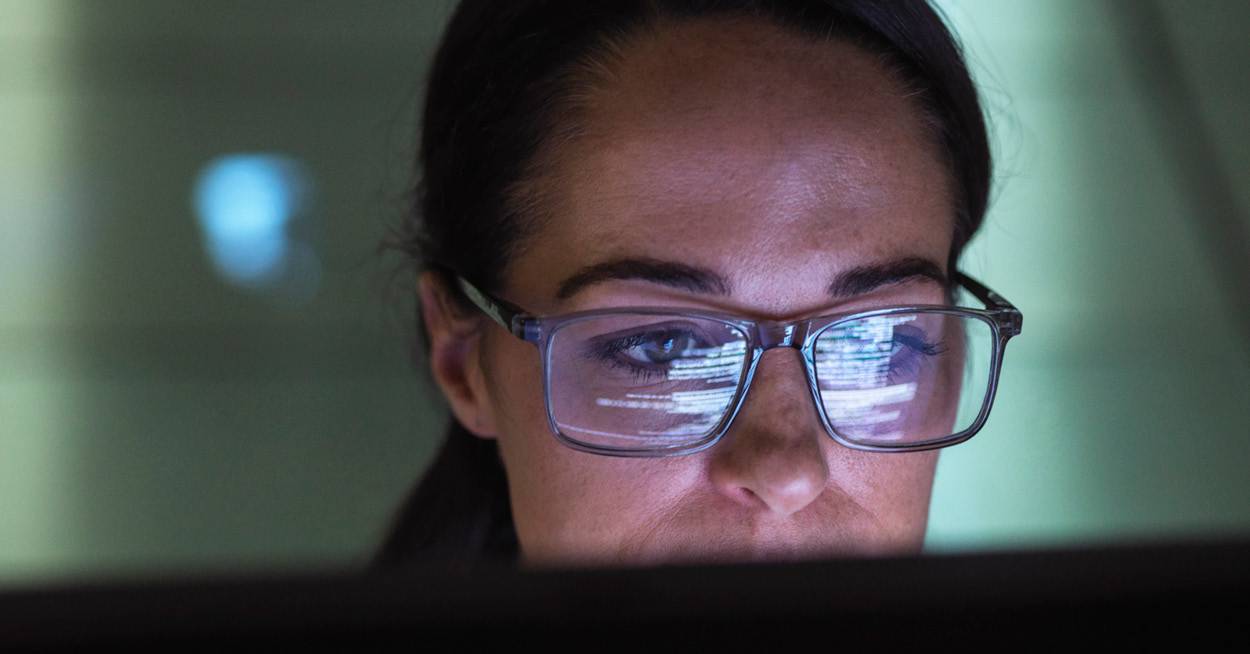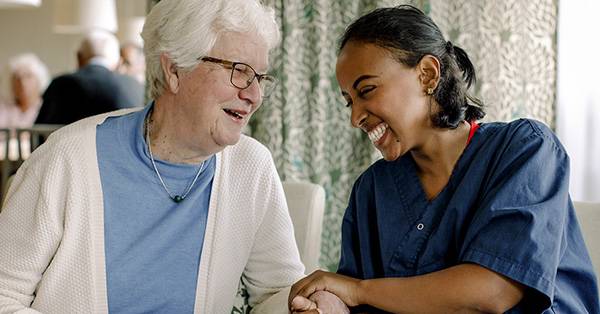- Solutions
- Solutions
- Home Health
- Hospice
- Life Plan Community
- Palliative Care
- Private Duty
- Senior Living
- Skilled Nursing
- Skilled Nursing
- Skilled Nursing Software
- Advanced Insights
- Customer relationship management
- Data and analytics
- Financial & operations management
- Marketing
- Nutrition management
- Referral management
- Regulatory compliance
- Retail management
- Resident engagement
- Revenue cycle management
- Skilled nursing interoperability
- Partners
- Blogs
- Resources
- About
- User Conference

Overcoming challenges in staffing, retention & revenue in senior living
In the wake of Covid-19, nursing, senior living and long-term care organizations continue to face historic challenges in staffing. As they struggle to both hire and retain essential workers, facilities are experiencing the kind of impact on outcomes and revenue that can jeopardize both present value and future growth prospects.
From the need to adapt workforces to new standards in resident care, to fighting turnover by offering a better work/life experience for employees, here’s a rundown of today’s most urgent challenges in staffing and retention, how they impact revenue, and how technology can help overcome them.
Challenge #1: A shift in resident care
For well over a decade now, constant regulatory updates, rapidly improving technology and the ongoing move to value-based care have been driving foundational change in resident care. Keeping up with these factors has become a specialized, complex task — and even more so since the pandemic.
Indeed, Covid-19 has not only accelerated these trends in resident care, but also created a need to adapt to additional changes like:
- The shift to remote care that’s become an expectation among residents after the widespread social distancing guidelines and transition to at-home care caused by the pandemic
- The need for additional staff to provide care during moments of crisis, such as the influx of resident admissions in skilled nursing facilities
- The need for an efficient way to ensure that staff are trained in crisis/pandemic response
Adapting to these changes is a big job, and a necessary one. Organizations must meet not only the health and wellness needs of residents, but their personal preferences, too. That includes taking steps to ensure that residents’ psychosocial needs are met. For example, by enabling fast and easy communications with caregivers and loved ones at all times.
How can technology help? Fortunately, a variety of tools are available to help facilities meet these new demands. For instance, video conferencing and remote monitoring tools make it easy and affordable for residents to transition to home care, helping facilities onboard more residents without the need to upscale their workforce, while also enabling better communication among everyone involved.
In addition, tools that automate certain redundant tasks can optimize staff productivity and even improve care, all with fewer workers. By leveraging advanced clinical insights and/or analytical tools, for instance, facilities can be assisted in efforts to reduce their risk of falls and re-hospitalizations, which can positively affect outcomes without the need to hire additional staff.
Challenge #2: The Great Resignation and impacted revenue
Another effect of Covid-19, the “Great Resignation,” has seen the widespread resignation of thousands of clinical workers in favor of better opportunities, which sometimes means leaving the profession altogether. The result is a shortage of registered nurses, LPNs and CNAs that’s hitting long-term care facilities particularly hard.
Especially in facilities with low retention rates, this shortage is having immediate consequences. Burnout is on the rise among remaining staff who have to pick up those extra shifts. Resident care can be compromised as well, directly affecting outcomes and resident satisfaction. And dramatic shifts in supply and demand can restrict an organization’s ability to accept new residents, further disrupting revenue.
“You may have open beds, you may have open assisted living units,” as LeadingAge Minnesota president and CEO Kari Thurlow explained to NPR. “But you can’t admit people because you don’t have the staff. And that means that you’re not necessarily bringing in the revenue to support that organization. And it creates a spiral, a downward financial spiral that is difficult to recover from.”
The shortage is affecting budgets in other ways, too. For instance, signing bonuses have become a common, sometimes necessary way to secure new employees. And the cost of hiring travel nurses to help fill gaps in coverage have skyrocketed — so much so that some prominent industry figures are working with lawmakers to increase the availability of foreign nurses in the United States.
How can technology help? Newly available workforce tools like AI-powered automation can help facilities more efficiently carry out redundant, time-consuming tasks with less labor. Customizable to meet the needs of individual facilities or larger organizations, these tools are designed to help ease the effects of understaffing for employers and minimize the need to hire additional workers.
Challenge #3: The need for greater employee engagement and motivation
Difficult as they have been to confront, these challenges in staffing and retention can also provide some important learning opportunities. Leaders who can identify and act upon these lessons will be able to better adapt in the future, as well as be in a better position to pursue opportunities for future growth.
For instance, the need to value current staff members has never been more keenly felt. The pandemic underlined the importance of maintaining camaraderie, not only internally but as part of the larger care framework. Be it acute or post-acute care, home health or any other setting, effective cooperation is vital at every stage, for quality of care as well as letting clinicians work with a minimum of obstacles.
This lesson has been repeatedly borne out in the last few years, as the pandemic has underlined the need for facilities to work effectively and collaboratively with hospitals and acute care providers throughout the transition of care. This doesn’t just help you in efforts to prevent readmissions, but helps to ensure that all documentation and goals for each resident are accurately and seamlessly carried over from the hospital or acute setting to ensure the highest possible level of care.
Of course, the larger goal is always to put residents at the center of day-to-day activities and strategic decision-making. Doing so while coping with the ongoing shortage means engaging and empowering workers in new ways. The idea isn’t just to assure material compensation, but to consider the overall mental health of both residents and staff, and work to best accommodate them.
How can technology help? A unified system that integrates EHR with a suite of communications and administrative tools can enable more seamless communication among everyone involved, promoting engagement and collaboration. Ideally, the solution provided will offer an easy-to-use interface that’s designed to help workers perform their tasks effectively and with a minimal training.
Because they can more readily understand the technology, workers spend less time using it, and more time caring for residents. And by bringing many tasks together within a single system, organizations can avoid the inefficiencies and extraneous costs of having to make a variety of different technologies work seamlessly together.
Get help overcoming staffing challenges with MatrixCare
At MatrixCare, we’re always working to stay on top of challenges in staffing, retention and workplace efficiency, and we’re proud to offer innovative solutions like MyAnalytics and Clinical Advanced Insights to help facilities meet these important goals.
Designed to optimize productivity with fewer workers while streamlining tasks like incident tracking, wound and infection management, meal planning and more, our suite of tools is customized to meet the demands facing senior and long-term care facilities today, and in the years to come.
See what MatrixCare can do for you
To learn more about what our solutions can do for your organization.
Robert Moore
Robert Moore, RN, RAC-CT, DNS-CT is a Registered Nurse and the Director, of Strategy & Portfolio Management with MatrixCare LPC (Life Plan Communities). Rob started out in healthcare as a CNA in Post-Acute Care and has been a Registered Nurse for over 15 years. During his time in the nursing profession, he has held the following positions: Telemetry Unit Staff Nurse, Unit Manager, MDS Coordinator, Director of Nursing, Quality Assurance, Business Analysis, and Product Manager. Rob is very passionate about Post-Acute care and the nursing profession as a whole and is always looking for opportunities to serve this profession!
Related Posts


See MatrixCare in action
Start by having a call with one of our experts to see our platform in action.
MatrixCare offers industry-leading software solutions. Thousands of facility-based and home-based care organizations trust us to help them improve efficiency and provide exceptional care.
© 2025 MatrixCare is a registered trademark of MatrixCare. All rights reserved.





